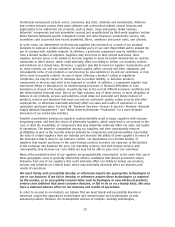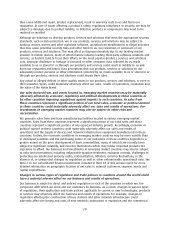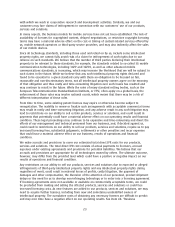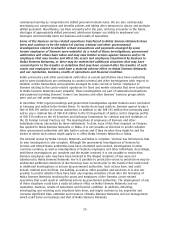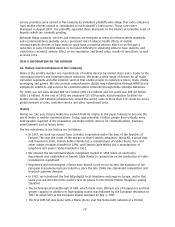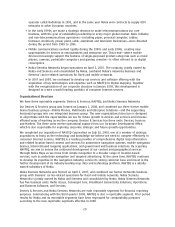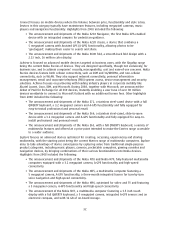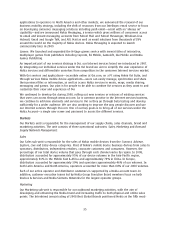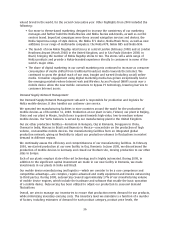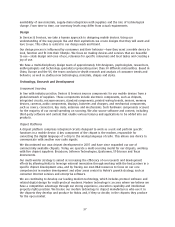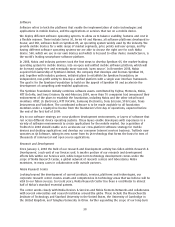Nokia 2008 Annual Report Download - page 29
Download and view the complete annual report
Please find page 29 of the 2008 Nokia annual report below. You can navigate through the pages in the report by either clicking on the pages listed below, or by using the keyword search tool below to find specific information within the annual report.service providers were named in five lawsuits by individual plaintiffs who allege that radio emissions
from mobile phones caused or contributed to each plaintiff’s brain tumor. Those cases were
dismissed in August 2007. The plaintiffs appealed those dismissals to the District of Columbia Court of
Appeals which are currently pending.
Although Nokia products, services and solutions are designed to meet all relevant safety standards
and recommendations globally, even a perceived risk of adverse health effects of mobile
communications devices or base stations could have a material adverse effect on us through a
reduction in sales of mobile devices or increased difficulty in obtaining sites for base stations, and
could have a material adverse effect on our reputation and brand value, results of operations as well
as share price.
ITEM 4. INFORMATION ON THE COMPANY
4A. History and Development of the Company
Nokia is the world’s number one manufacturer of mobile devices by market share and a leader in the
converging Internet and communications industries. We make a wide range of devices for all major
consumer segments and offer Internet services that enable people to experience music, maps, media,
messaging and games. We also provide comprehensive digital map information through NAVTEQ and
equipment, solutions and services for communications networks through Nokia Siemens Networks.
For 2008, our net sales totaled EUR 50.7 billion (USD 70.6 billion) and net profit was EUR 4.0 billion
(USD 5.6 billion). At the end of 2008, we employed 125 829 people; had production facilities for
mobile devices and network infrastructure around the world; sales in more than 150 countries; and a
global network of sales, customer service and other operational units.
History
During our 142 year history, Nokia has evolved from its origins in the paper industry to become the
world leader in mobile communications. Today, approximately a billion people from virtually every
demographic segment of the population use Nokia mobile devices for communications, business,
entertainment and as luxury items.
The key milestones in our history are as follows:
• In 1967, we took our current form as Nokia Corporation under the laws of the Republic of
Finland. This was the result of the merger of three Finnish companies: Nokia AB, a woodpulp
mill founded in 1865; Finnish Rubber Works Ltd, a manufacturer of rubber boots, tires and
other rubber products founded in 1898; and Finnish Cable Works Ltd, a manufacturer of
telephone and power cables founded in 1912.
• We entered the telecommunications equipment market in 1960 when an electronics
department was established at Finnish Cable Works to concentrate on the production of radio
transmission equipment.
• Regulatory and technological reforms have played a role in our success. Deregulation of the
European telecommunications industries since the late 1980s has stimulated competition and
boosted customer demand.
• In 1982, we introduced the first fullydigital local telephone exchange in Europe, and in that
same year we introduced the world’s first car phone for the Nordic Mobile Telephone analog
standard.
• The technological breakthrough of GSM, which made more efficient use of frequencies and had
greater capacity in addition to highquality sound, was followed by the European resolution in
1987 to adopt GSM as the European digital standard by July 1, 1991.
• The first GSM call was made with a Nokia phone over the Nokiabuilt network of a Finnish
28


